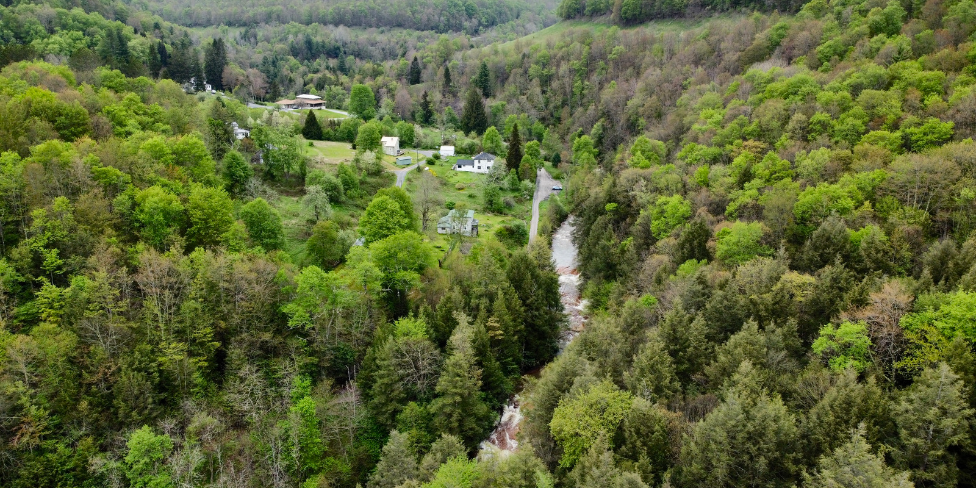“21st century economic development is based on what we already have … don’t give away the store.” (Edward T. McMahon)
The source for much of this update came from The Secrets of Successful Small Communities by Edward T. McMahon. Former president of Scenic America, McMahon, now holds the Charles E. Fraser Chair on Sustainable Development and Environmental Policy at the Urban Land Institute, Washington DC.
While waiting for the next step in the NEPA process—the Draft Environmental Impact Statement (DEIS), which was supposed to be issued in May—we decided to look at the bigger picture here on the mountaintop and discuss the value of what we already have. We are very fortunate to live in a beautiful place on Earth where we can still step out our doors and find solace in nature.
And our thriving, sustainable economy is based on this proximity to open space, our assets:
scenic beauty, rivers, falls, parks, mountain trails, outdoor wilderness, recreational areas, historic character, natural surroundings, dark night skies, world-class scenery, abundant wildlife, and outdoor recreation resources.
What’s important for economic development now is much different than it used to be. The old economy—logging and coal—was based on digging out, cutting down, and paving over, and the most important infrastructure investment was roads. Our new economy is driven by many little things—our outdoor resources, homegrown businesses, quality of life, small-town feel, connectedness, music, and art—not just one big company or one big highway.
How do we protect our assets? How do we keep our mountaintop from turning into “anywhere?” According to McMahon, “If not careful, towns can turn into a faceless place, cookie-cutter, that young people flee and tourists avoid.”
Successful small communities have succeeded by:
- paying attention to aesthetics
- protecting and enhancing scenic views, historic buildings, and unique characteristics
- supporting construction projects that fit into the existing community
- paying attention to where development goes and how it is arranged
- encouraging policies that promote walking, biking
- preserving open space, protecting air and water quality
“Successful communities have high expectations; they know what they’ve got and the economic value. Communities that do not say NO to bad development will get the worst of everything—low standards or no standards, the community will sink to the bottom.”
Bend, Oregon, is a good example of a community that developed a new economy by promoting what they had. Bend is where the spotted owl resided and, upon protection of that species’ habitat, the logging industry in Bend saw a major downturn. That was also when the new economic shift was happening in Oregon. The town’s economy rebounded to a point many times stronger than it was with logging—by promoting their natural environment and outdoor life: “If your business is in Bend, you can be on vacation at 5 p.m. every day.”
A highway splitting the towns of Thomas and Davis runs the risk of turning our mountaintop into “anywhere.” If not carefully executed and planned, infrastructure associated with Corridor H could bring a sea of strip malls and big box stores to our quiet small-town atmosphere; the antithesis of what draws residents and tourists to our beautiful highlands.
We invite you to learn more and join the campaign at go-northcorridorh.org

